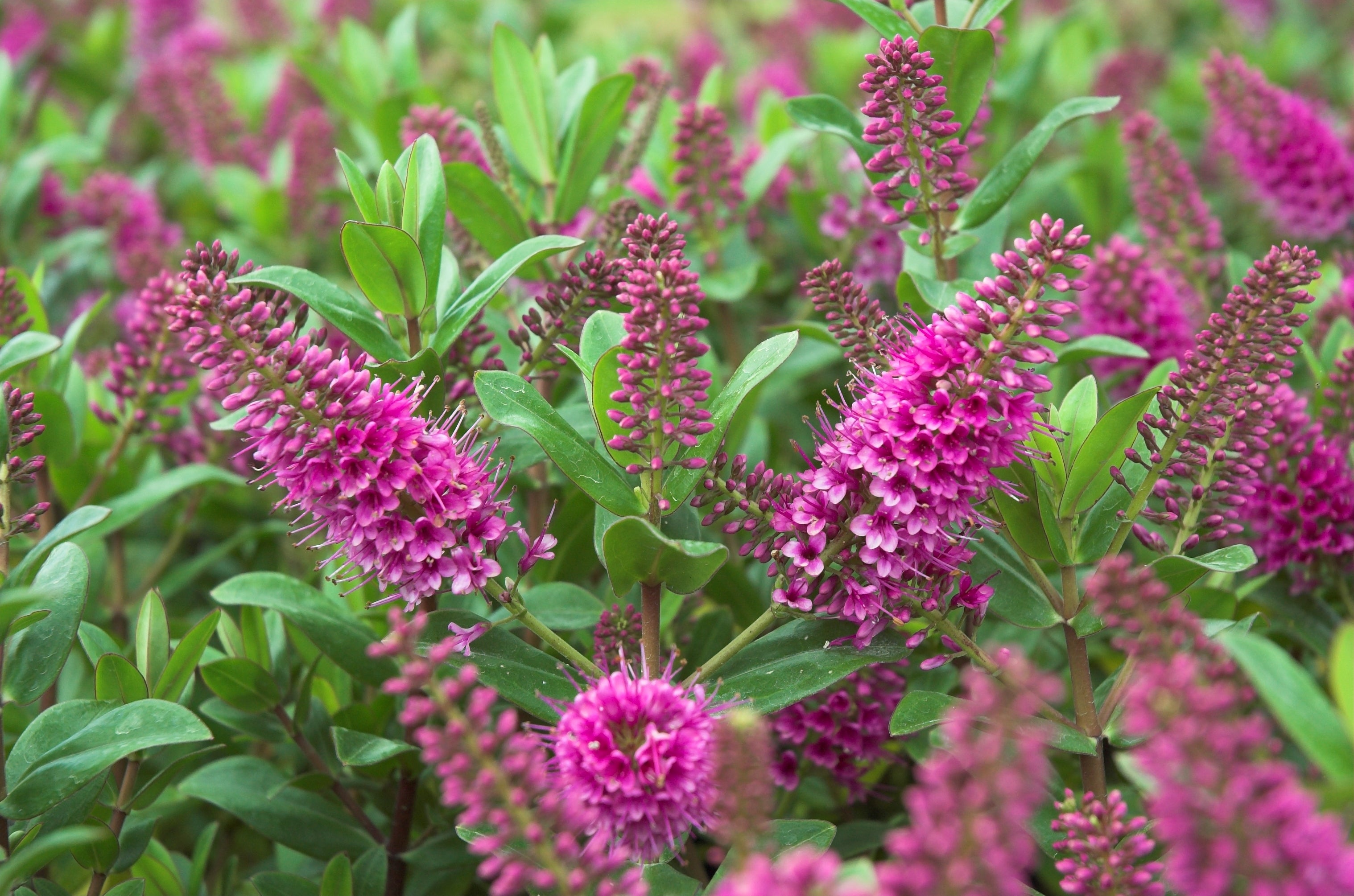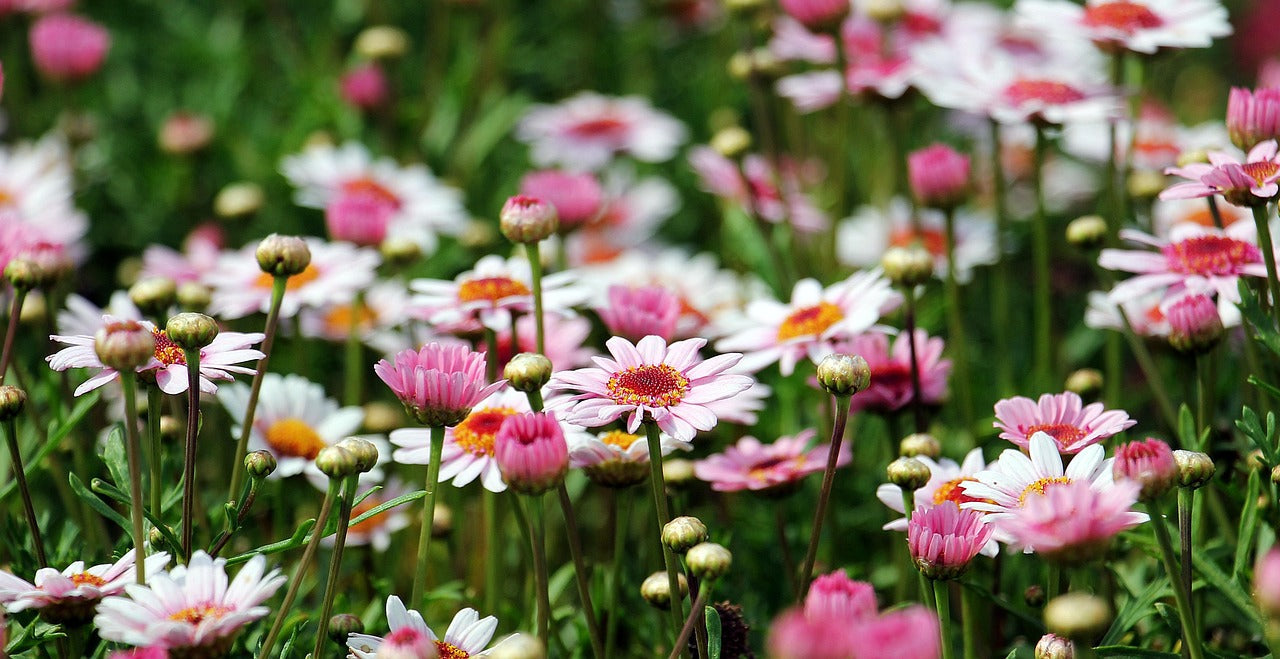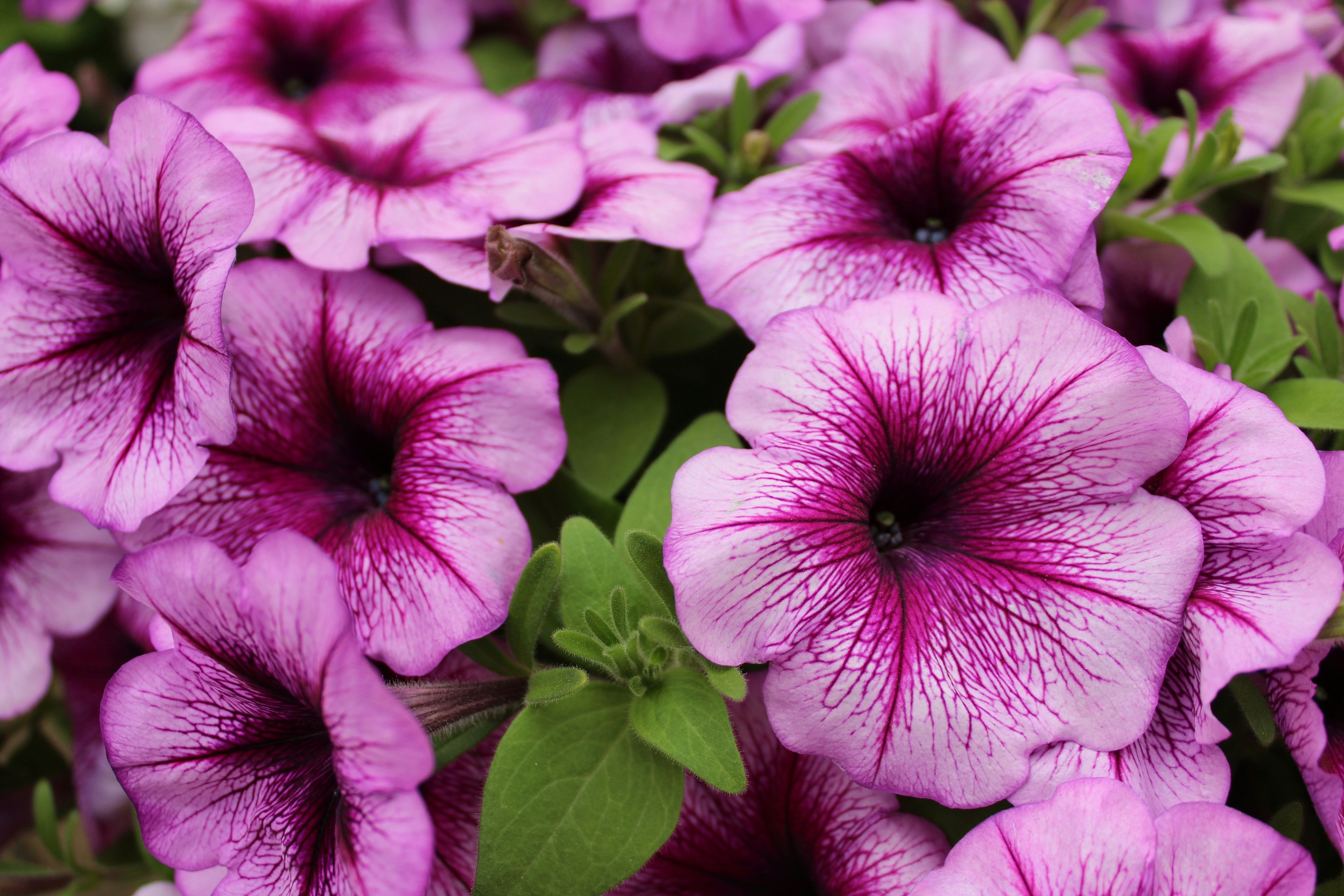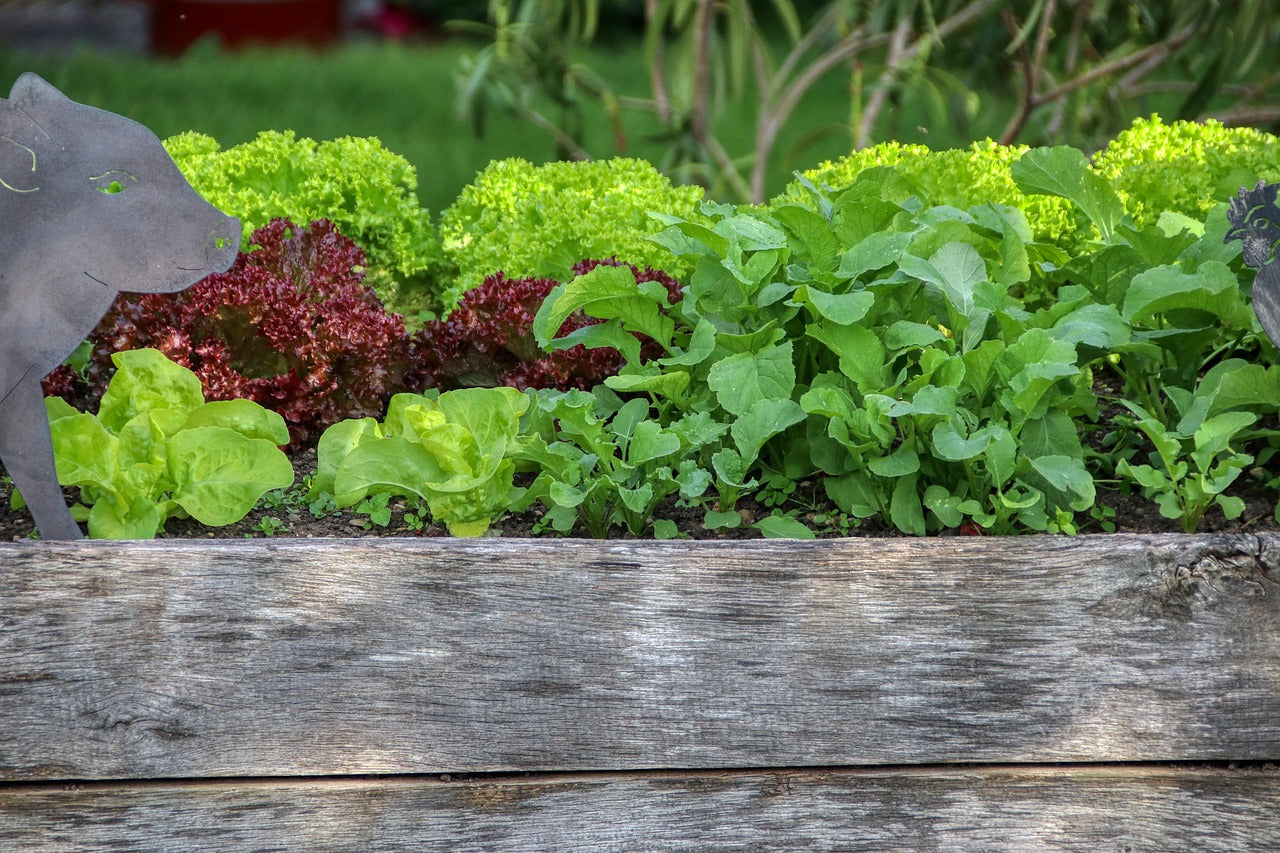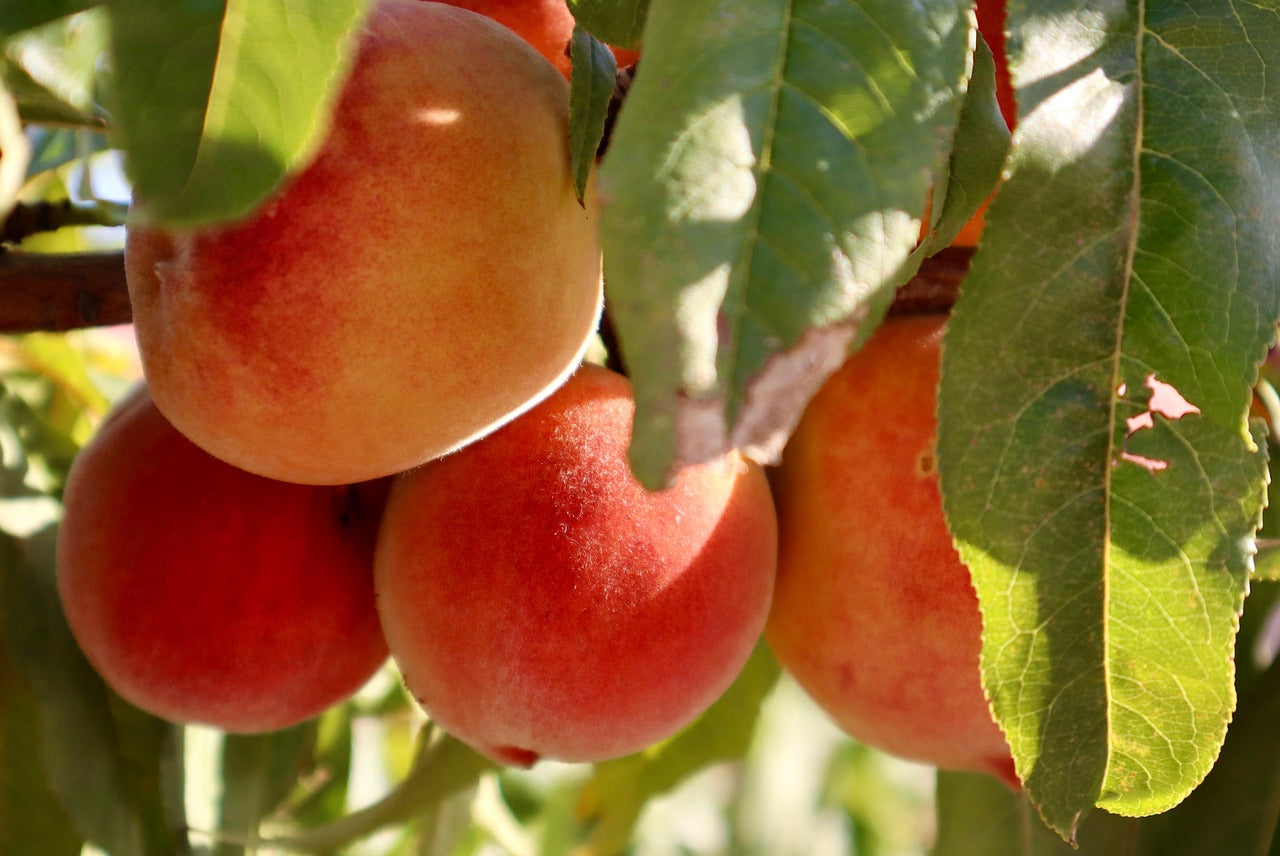Hebes are a true gem in the garden. This interesting evergreen shrub, which was named after the Greek goddess of youth, includes numerous species, so you’re sure to find one that will suit your needs. Hebe shrubs are also extremely versatile, easily thriving in many conditions and just as easy to maintain.
Majority of hebe shrubs are native to New Zealand and range in size from around 3 feet tall to large tree-like varieties over 6 foot. Some varieties have small leaves while others are large, and though they are evergreen in nature their foliage provides year round interest with changing shades of brown, gold, burgundy and bronze.

Pictured: Hebe ‘Rhubarb and Custard’
Most hebes bloom in summer and last throughout autumn, some even flower in winter too. These spiked flowers also come in a range of colors—from white, pink and crimson to blue and purple.
How to grow Hebes
Growing hebes is really easy! They can be used as edging, grown in containers or rock gardens. They are most suited to areas that experience cool summers and mild winters and can adapt to range of soils but perform best if the soil is well-draining.
Hebes can be grown in both sun and shade though full sun is preferable. When planting, the hebe should be planted at the same depth as the pot it came in. Adding a bit of compost when planting will help with plant health and growth.
Caring for your Hebes
The hebe plant does not require a lot of care once it is established. Although the shrub doesn’t need much in the way of fertiliser, you can apply some once a year in late winter or early spring prior to new growth. You can also trim the hebe plant back about halfway to promote bushier growth. Deadheading the spent blooms can be done as well to help promote additional flowering. In areas with harsher winters, they should be protected by surrounding the plant with straw mulch.

